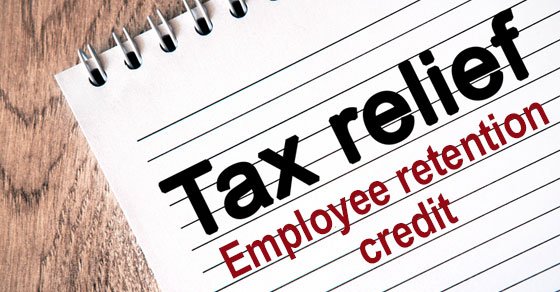More About Senator Hassan pushes IRS to take action on tax credit delays

Some Ideas on Small Business Tax Credit Programs - Treasury Department You Should Know
Others, however, may still be eligible for support if they failed to take complete benefit of the relief arrangements in previous years. Typically, businesses were qualified for the refundable worker retention tax credit (ERTC) if their company operations were suspended in 2020 or 2021, if they sustained a certain level of revenue loss or if they certified as a recovery startup business after Feb.

The rules for claiming the ERTC were broadened substantially in 2021, indicating that some small-business clients might not have taken benefit of the relief. Official Info Here 's still possible for those clients to submit amended payroll income tax return so it's critical to completely understand the guidelines to make certain customers are getting the full amount they deserve.

Deadline Extended to Claim the Employee Retention Tax Credit
Still, some small-business owners might not have understood that they get approved for the 2021 credit, and they have up to 3 years from their original filing deadline to retroactively claim the credit. Usually, companies were eligible to claim the ERTC if their company operations were suspended in 2020 or 2021.
For 2021, nevertheless, companies might certify if their revenue decreased by only 20% when compared to the very same quarter in 2019. Under the initial law, companies were not eligible for the ERTC if they likewise got an Income Protection Program (PPP) loan. That rule was later on eliminated, so that services that received PPP loans might likewise take benefit of the ERTC (however, if PPP loan proceeds used to pay incomes were forgiven, those wages were not eligible for the ERTC).

ERTC REFUND DEADLINE: How to get ERTC Tax Credit 2021 [ERC 2020] IRC ERC Tax Credit [File Form 941x] - YouTube
The 5-Second Trick For Advising clients to file Form 941-X for missed COVID-19 relief
Originally, the credit was topped at 50% for as much as $10,000 in incomes (so, $5,000 per worker). In 2021, the amount was broadened so that companies could claim as much as $7,000 per employee per quarter (approximately $21,000 overall in 2021). Numerous employers have actually also been confused about the guidelines for working employees.
The Coronavirus Aid, Relief, and Economic Security (CARES) Act offered a chance for employers to create a refundable tax credit used to offset their employment taxes and look for a refund for any excess credit created through December 31, 2020. The COVID-19-related Tax Relief Act of 2020 even more extended the Employee Retention Tax Credit (ERTC) through June 30, 2021.
